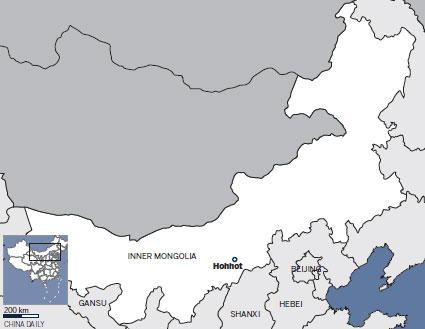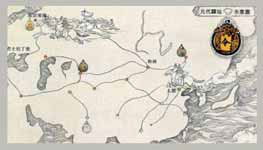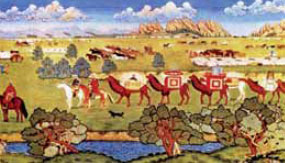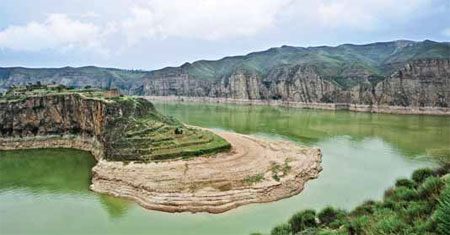Pearl of the ancient grasslands Silk Road
Q+A | Qin Yi
Hohhot, capital of the Inner Mongolia autonomous region and the pearl of the grasslands is set to shine even brighter during China's campaign to boost the grasslands Silk Road economic belt. The city's mayor Qin Yi shares his insights with China Daily reporters Yuan Hui and Yang Cheng.
Could you enlighten us on the historical and cultural backgrounds of Hohhot's role in the grasslands Silk Road?
In September 2013, during his visit to countries in Central Asia, Chinese President Xi Jinping proposed the strategy that China join hands with neighboring countries to construct a Silk Road economic belt, in a bid to strengthen economic cooperation and explore the ample cooperation potential that exists.
As one of the four Silk Road economic belts, the grasslands not only link Eastern and Western cultures, but also connect the southern area of the Great Wall and the grasslands area in North China. The grasslands are playing a key role in accelerating the thriving prosperity of the modern Silk Road.
The Silk Road started from the nearby areas of the Great Wall in Inner Mongolia, and within these, Hohhot is a key hub, which is located in the south of the Mongolian Plateau, facing Yinshan Mountain and the neighboring grasslands to the north.
It links the Yellow River in the south and the central plain area. It connects Hebei and Shanxi provinces in the east and is linked with the Hexi corridor, which starts from Gansu province and ends in Xinjiang Uygur autonomous region.
Hohhot is one of the birthplaces of Chinese civilization and it has a recorded history of some 2,500 years. It was called Yunzhong in the Qin Dynasty (221-206BC), Shengyue Ancient town in the Northern Wei Dynasty (AD386-534), and Fengcheng town in the Liao Dynasty (916-1125).
The city gained the name Hohhot during the sixth year of the Longqing reign (1572) during the Ming Dynasty (1368-1644) and began to develop its trade with Mongolia.
In 1739, during the Qianlong's reign in Qing Dynasty (1644-1911), the government constructed the city further and boosted trade with Mongolia. It became a key commercial city and an important commodities hub.

Culturally, Hohhot is the frontier for herding and farming and the two cultures are mingled together. It is not only situated in a pristine and endless, windy land for herding sheep and cattle, as mentioned in the renowned Chinese poem Shulege, but is also the origin for Emperor Zhao Wuling (307 BC)'s Hufu Qishe, or the policy of adopting the Hu tribe's clothing and learning their cavalry archery skills, as this is the period when the Chinese forces began to make the transition from chariots to cavalry.
Hohhot was also the destination for Lady Zhaojun, when she was sent beyond the Great Wall as a bride (33 BC).
It was a hub for the ancient trade in silk and tea, and was an important cultural center with a thriving Zhaomiao temple culture, a unique Buddhist temple style, and was home to many ethnic groups, whose cultures evolved, took shape, mingled, and now celebrate their harmonies there, forming the rich and unique grasslands cultures. So we can see that Hohhot played a very important role in the grasslands Silk Road.
Could you explain the aims and the significance of hosting the Grasslands Silk Road International Communication and Cooperation Forum?
First, we are aiming to research and explore the colorful cultures of the grasslands and to make Hohhot an international center for grasslands culture.
The Mongolian ethnic group is the largest in the city, which is home to a total of 41 ethnic groups, including the Hui, Manchu, Daur and Ewenki. The inheritance and development of their rich cultures will drive the tourism sector.
In recent years, we have protected and renovated many time-honored temples including the Xilitu Lamasery and the Five-Pagoda Temple, and also Shengyue Ancient Town. The renovation of scenic attractions including Wuchuan Daqing Mountain Grasslands, Tuzuoqi Hasuhai Cultural Park and Laoniu Bay National Geological Park has also been completed.
The international forum is expected to gather a number of experts and scholars to enhance research into grasslands culture, so as to raise its profile.
Second, the event is expected to enhance international exchanges and help build the city into a spearhead for China's opening to its western and northern neighbors.
Both the country and the autonomous region have mapped out strategies to accelerate regional cooperation and joint prosperity among neighboring regions and countries.
As the capital of the autonomous region, Hohhot is the closest provincial capital to Beijing, and located near the Bohai Bay economic belt, the city was the earliest border city to open-up to foreign countries, particularly Mongolia and Russia, and it is a key hub linking the northeast, north, and northwest China.
Railways connecting Hohhot with Zhangjiakou, Beijing and the Xinjiang Uyghur autonomous region are under construction, and they are expected to open a new chapter for the city's international trade and investment.
The Grasslands Silk Road International Communication and Cooperation Forum will not only meet the rising demand to boost the grasslands Silk Road economic belt, but also benefit the Inner Mongolia autonomous region's strategy to boost its economy.
Third, we aim to enhance the city's economic vigor.
As the political, cultural, economic, science and technology and financial center of the autonomous region, the city accounts for nearly 70 percent of the autonomous region's science, education, human and capital resources. The city's economy has been on an upward trend and the average growth rate of its GDP has been 18.3 percent in recent years. Its GDP reached 271 billion yuan ($44.4 billion) in 2013.
We want the forum to sustain that growth momentum, by coming up with new and innovative solutions that will take the grasslands Silk Road cooperation to a higher level. We want experts and scholars to contribute their ideas of ways to achieve this.
Chinese President Xi Jinping noted during his visit to the Inner Mongolia autonomous region this year, we should make "the northern border of China, a beautiful scenic area, more shining". The autonomous region's government has introduced its so-called 8337 strategies for local development, and the city also has its own efforts. Could you introduce some of the efforts?
All these rosy prospects need more expert advice, and we want to put forward our own plans and listen to advice.
For one thing, we need the public to know that we will upgrade the urban and suburban areas. We will upgrade downtown, construct a new town in the east, build a scenic area in the north and modern industrial parks in the south.
For another, we will restructure our industries.
We will build four industrial parks, each involving an investment of 100 billion yuan. One will be a national-level high-tech park.
New materials, renewable energy and equipment manufacturing industrial parks will be built in Shagerqin. A power, metallurgical, and coal chemistry center will be built in Tuoqing. While a green food production base and a cloud computing center will be built in the Shengyue economic development zone, a refinery chemical center will be built in the Jinqiao Petrochemical zone.
A high-tech production area will be built in Jinshan National-level High-tech Development Zone.
In terms of industrial restructuring, the authorities will drive the upgrading to modern services, including cloud computing, modern logistics, technology and occupational training.
The cloud computing park has already attracted China Telecom, China Unicom and China Mobile, and we aim to build the park into the nation's key industrial park in the sector.
We also aim to build the city into the nation's key grasslands culture tourism center and tourist destination city.
We are now promoting industrial upgrading. We will support the green food industry, with the dairy industry as the core, the green energy sector with the electricity power as the core, as well as the industrial clusters in photovoltaic and modern chemistry sectors.
We are supporting local dairy giants Mengniu and Yili and our aim is for them to rank among the world's top 10 dairy companies. We expect the power installed capacity to hit 10 million kilowatts annually and the refined oil production capacity top 10 million tons.
In agriculture, the city will continue its efforts to develop large-scale vegetable farms, and boost its cattle and modern grass sectors.
A total of 965 new villages will undergo construction to the national new village standards, while a number of villages are required to get rid of poverty. We have an even bolder ambition, that means, even more profound changes for the city.
From 2013 to 2015, we will relocate residents from delapidated homes, upgrade the heating and water systems for the whole city, protect the ecological environment of the Daqing Mountain area and control the air quality, as well as accelerate the construction of water pipes and the railway network.
By 2017, the 70th anniversary of the founding of the Inner Mongolia autonomous region, we expect all the key projects including the railways, new airport and subways will be finished.
And in about 10 years, we expect the city's management level will undergo fundamental reform.
By 2018 as the fastest projection timetable, the city's east and south new towns will be completed and the city's urban development will reach a new high.
We hope it will take the lead in the region to boost all-round comprehensive development and realize the new type of urbanization advocated by the country's leaders.

|
The Five-Pagoda Temple, which was built in 1727. |
|
Map of the grasslands Silk Road in the Yuan Dynasty (1271-1368). Courtesy of Inner Mongolia Museum |
|
A painting of the ancient grasslands Silk Road in Yuan Dynasty. Courtesy of Inner Mongolia Museum |
|
Laoniu Bay along the Yellow River. A national-level geological park has been built there. Photos provided to China Daily |



 Print
Print Mail
Mail









